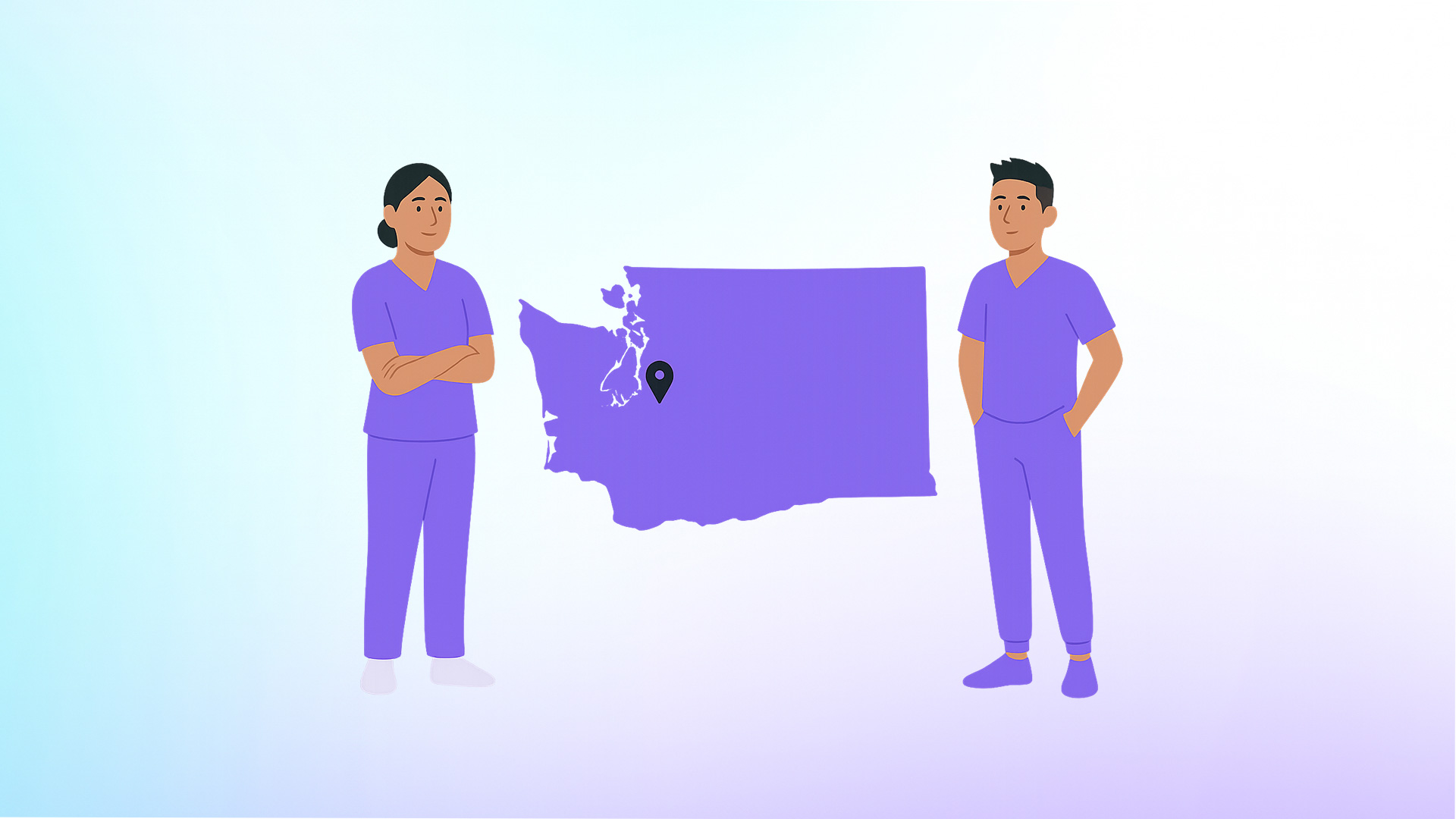If you’re an FNP student staring down the deadline without a confirmed clinical placement, your fastest route to securing clinical hours is to immediately leverage your network, cold-call high-yield clinical sites, request assistance from your clinical placement coordinator, and consider preceptor matching paid services to meet your program requirements. Most nurse practitioner programs won’t grant extensions for missed rotations, so taking bold, decisive action now is the only way to avoid graduation delays, additional tuition, or jeopardizing your RN license timeline.
TL;DR – FNP Clinical Placement Emergency: Your Action Plan When Time's Running Out
- Time’s Ticking, Take Action Fast – If you're weeks from your start date with no preceptor, act now: prioritize outreach, drop the “ideal site” dream, and focus on getting placed, not perfect.
- Tap Your Network Like a Pro – Classmates, coworkers, instructors, alumni—your next preceptor might already be one DM away. Ask specifically, follow up respectfully, and don’t be shy.
- Cold-Calling Is a Skill—Use It – Clinics hear from NP students all the time. Stand out with a clear script, resume-ready emails, and confident follow-ups. Persistence beats panic.
- Use Your School—Even If They Say You’re On Your Own – Push for faculty leads, cancellation lists, and clarification on paperwork. Phone > email when time is short.
- Paid Placement Services Like NPHub Are A Lifeline – When all else fails, NPHub can match you with a vetted preceptor fast—so you avoid delays, extra tuition, or missing your graduation deadline.
Clinical Placement Panic Mode: Why It Happens and What to Do Next
The final semester of your family nurse practitioner program should be focused on gaining clinical expertise, applying treatment plans, and building confidence in your role as an advanced practice registered nurse. But for many FNP students, that vision crashes into reality when they realize their clinical placement site still isn’t secured—and the clock is ticking.
This last-minute scramble isn’t rare. Across nursing schools nationwide, nursing students and nurse practitioner students are struggling to meet clinical clearance requirements and secure clinical sites that satisfy both program requirements and learning objectives. With faculty stretched thin and placement teams often unable to assist every student individually, the responsibility falls on you—to find a qualified clinical preceptor, meet affiliation agreement deadlines, and avoid any delay in graduation.
It’s high-pressure. It’s overwhelming. But it’s also fixable—with the right strategy. This guide will walk you through exactly what to do next to meet your clinical needs now, without sacrificing your timeline, your sanity, or your career path.
Step 1: Take Control of Your FNP Clinical Placement Emergency
When you're weeks away from starting a clinical rotation and still don’t have a confirmed placement site, it's easy to freeze or spiral. But that is the perfect moment to take ownership of the situation with speed and strategy.
The clinical placement process was never designed with student ease in mind, especially for NP students navigating family nurse practitioner programs that offer little structured help. The system may not be working for you, but you can still work the system.
First, shift your mindset. Instead of seeing this as a last-minute scramble, think of it as a focused sprint. You don’t have time for perfection, what you need is a confirmed placement site that meets your program’s clinical clearance requirements and gets your required clinical education component approved.
Here’s how to mentally and logistically reset for action:
- Accept that this is now your full-time side hustle. If you're juggling work, school, and life, carve out at least one focused hour a day to hunt placements.
- Let go of “ideal.” Right now, your clinical needs outweigh specialty preferences. Family medicine? Urgent care? Go for it.
- Check your program requirements. Re-read the fine print from your clinical placement coordinator: How many clinical hours do you need? What settings are approved? What paperwork is time-sensitive?
By accepting the urgency and clearly understanding your school’s placement policies, you're setting yourself up for a focused, productive outreach phase which starts with the network you already have (yes, even if you think it’s useless).
Step 2: Tap Into Your Personal Network to Find Clinical Sites Fast
You don’t need to start from scratch—you need to start from your people. One of the most overlooked resources in the clinical placement process is the very network you’ve already built through your nursing practice, classroom-based coursework, and even past jobs as an RN. You’d be surprised how often a fellow student or former coworker becomes the bridge to a placement site you never would’ve found on your own.
This isn’t just about sending a few Hail Mary texts. This is about crafting a targeted, respectful outreach campaign that leverages real relationships in smart ways. Most experienced nurse practitioners, clinical preceptors, and advanced practice nurses have been through this grind and get it—but they can’t help you if they don’t know you need it.
Here’s how to start tapping your network like a pro:
- Start with classmates—especially ones ahead of you in the program. Ask where they’ve done their clinical rotations and whether their preceptor is open to taking on more students. Most NP students love paying it forward, especially if you make it easy for them to refer you.
- Reach out to past RN supervisors or colleagues and other healthcare professionals. You may not have worked with NPs directly, but they often know providers at local clinics or hospitals. Ask specifically if they know anyone working in family medicine, women’s health, or primary care settings.
- Message former clinical instructors and nursing faculty. Instructors often have longstanding relationships with clinical preceptors in the local community. Even if they don’t have an open spot for you, they might connect you to another NP who does, or help you access valuable clinical experiences in a variety of healthcare settings.
- Use your alumni network. Check if your school has a directory, Facebook group, or LinkedIn alumni page. NP graduates often have more influence with clinical sites—and if you’re from the same school, they’re more likely to say yes.
- Post a professional “placement ask” in NP-specific forums or groups. Platforms like the NP Clinical Match Facebook group, Reddit (r/nursing or r/NPStudent), and state-level nursing boards can surface leads. Be clear about your dates, location, school, and specialty needs.
Sample outreach message:
“Hi [Name], I hope you’re well! I’m currently in my [semester/year] of the family nurse practitioner program at [School], and I’m urgently seeking a clinical placement for [rotation type] starting [date]. If you know of any NPs in [location] who might have availability, I’d be so grateful for a connection or introduction. Thank you in advance!”
Even if it feels awkward to ask, do it anyway. This is how placements happen every day—and most potential preceptors will be far more willing to help than you think.
If your network doesn’t turn up results fast, don’t stress. It just means it’s time to widen your net—and that starts with cold outreach. Let’s move into Step 3: Cold-Calling Clinics Like a Pro.
Step 3: Cold-Calling Clinics Like a Pro
So your network didn’t pan out—or maybe you’re still waiting on “I’ll ask around” to turn into actual leads. Time to stop waiting and start dialing. Cold outreach isn’t just for sales reps—it’s a clinical placement survival skill every FNP student should master.
The good news? Clinics get these kinds of calls all the time, especially from NP students in programs that don’t provide placement support. The bad news? Most students wing it, ramble, or don’t follow up—so they get ignored. To stand out, you need to be clear, concise, and confident.
Here’s your cold-outreach game plan:
- Target high-yield clinical sites. Focus on settings like family medicine, urgent care, walk-in clinics, and community health centers. These tend to see high patient volume and often have more flexibility to take students.
- Create a hit list of clinics to contact. Aim for 5–10 per day. Use Google Maps, Zocdoc, or your insurance provider directory to search clinics by specialty and zip code. For each clinic, try to identify the primary point of contact for student placements, such as a placement coordinator or office manager. Prioritize places that mention “teaching clinic,” “NP on staff,” or “preceptor experience.”
- Prepare your script. Know exactly what you’re going to say or type before you hit “send” or call. Introduce yourself as a nurse practitioner student, state your school, the clinical rotation type, date range, and your availability. Emphasize your flexibility and readiness to complete any paperwork quickly.
- Email first, then call. Send a brief, professional email with your info and resume. Follow up with a phone call 1–2 days later. Many clinics miss emails but will respond to a polite call from a determined student.
- Always follow up. One contact attempt is never enough. If you haven’t heard back in 2–3 days, send a gentle reminder. Persistence shows professionalism when done respectfully.
Here’s a simple cold-call script:
“Hi, my name is [Your Name], and I’m a family nurse practitioner student at [School]. I’m currently looking for a nurse practitioner clinical preceptor for my [type] rotation starting [date]. I was wondering if you or another provider at your clinic might be open to having a student this semester? I can send over all placement details and complete paperwork ASAP.”
And a sample cold-email:
Subject: FNP Student Seeking Clinical Placement in [City]
Hello [Clinic/Provider Name],
My name is [Name], and I’m a family nurse practitioner student from [University]. I’m currently seeking a clinical rotation in [Family Medicine/Women’s Health/Urgent Care] starting [Date]. I’d love to connect about any potential opportunities at your site. I’ve attached my resume and can provide affiliation paperwork and references right away.
Thank you for your time and consideration!
Best, [Your Full Name] [Phone Number] [Email]”*
Cold outreach can feel intimidating, but remember that you’re not asking for a favor. You’re offering to contribute to their team and bring value as a future advanced practice nurse. Confidence (and follow-through) can make all the difference.
Now, if your cold outreach campaign doesn’t land a yes within a week or two? It’s time to pull the institutional lever and see what help you can squeeze from your school. Let’s talk about the next step.
Step 4: Get Help From Your Clinical Placement Coordinator (Even When They’re “Too Busy”)
You might’ve already emailed your clinical placement coordinator once—or five times—only to get crickets or a copy-paste policy response. It’s infuriating, especially when you’re fulfilling a required clinical education component in a nurse practitioner program that’s quick to enforce deadlines but slow to offer real support.
Still, don’t give up on your school just yet. While many NP programs make placements “the student’s responsibility,” coordinators often have internal resources they don’t advertise—like cancellation lists, clinic relationships, or faculty connections. You just have to ask smarter.
Here’s how to get actual help from your school:
- Switch to phone or in-person communication. Emails can be ignored. Calls can’t. Visit their office or schedule a virtual meeting if you’re in an online FNP program.
- Be direct, but professional. State your clinical needs clearly and mention your past outreach efforts. Show that you’ve been proactive—not passive.
- Ask for specific support options:
- A list of affiliated clinical sites or previous preceptors
- Contact info for recent graduates or advanced practice nurses who have precepted students before
- Any last-minute cancellations from other NP students
- Whether external/paid placements are allowed and what the process is
- Any pending affiliation agreements already in process you can “hop on”
- Clarify the deadline and paperwork turnaround time. Many students miss placement windows not because they didn’t find a site—but because paperwork wasn’t submitted on time.
- Ask about flexibility in clinical clearance requirements. For example:
- Can a rotation start 1–2 weeks late if a site is secured soon?
- Will they accept a new preceptor even if they’re not already approved, provided they meet credentialing standards?
If your school has a placement team or committee, ask to speak with them directly. You might also reach out to faculty members who have clinical experience in your rotation area—sometimes, they’re more connected than the placement coordinator themselves.
This step can feel discouraging—especially if your school gives off “you’re on your own” energy. But stay persistent. Even a lukewarm “maybe” could turn into a lead or extension that buys you time.
But what if they truly don’t have anything for you? Or they tell you to figure it out on your own? Then it’s time to explore some creative and unconventional options that go beyond what most NP students even realize is possible.
Let’s talk about those more in depth.
Step 5: Exploring Creative and Paid Clinical Placement Options
When you’ve exhausted your network, hit every clinic in town, and squeezed your clinical placement coordinator for all they’re worth—and still come up empty? That’s your sign: it’s time to think outside the box and go beyond traditional placement paths.
Many nurse practitioner students don’t realize just how many unconventional options are out there—options that still meet clinical clearance requirements, offer high-quality learning experiences, and keep you on track to complete your family nurse practitioner program on time.
Here are your most viable fallback strategies when traditional routes fail:
- Consider telehealth and hybrid clinical rotations. Some NP programs now allow students to meet part of their clinical hours via telemedicine with preceptors who are licensed and practicing in a virtual care setting. These experiences can offer close contact with primary care providers, chronic condition management, health promotion, and treatment planning—all without commuting.
- Explore underserved or rural healthcare settings. Clinics in rural or medically underserved areas are often more open to students and may even offer a broader full-scope experience across primary care, women’s health, and preventative care. These settings provide valuable opportunities to develop clinical skills and work alongside primary care providers.
- Look into nontraditional clinical sites. Think outside hospitals and primary care offices:
- Public health departments
- School-based health centers
- Community health initiatives
- Retail clinics
- Correctional health systems
- Use a clinical placement service like NPHub. If time is running out, paid services can help match you with available clinical preceptors quickly—often within days. Yes, there’s a cost, but that cost might be far less than delaying graduation, repeating a semester, or losing financial aid. NPHub offers:
- Pre-vetted clinical sites
- Help with paperwork
- Fast turnaround
- Support if your rotation falls through again
- What to consider before choosing:
- Cost and refund policies
- Whether your school accepts external preceptors
- Timeline for final paperwork approval
At this stage, your top priority is fulfilling your program requirements with a quality learning experience—not necessarily your dream rotation. As long as the placement meets clinical practice standards, aligns with your learning objectives, and gets school approval, it’s a win. These creative placements can help you build clinical skills in health promotion and chronic condition management, preparing you for a wide range of patient care scenarios.
And once you do lock it in? You’re not just back on track—you’re smarter, scrappier, and a whole lot more prepared for the next hurdle.
So let’s talk about that. Because even if you survive this clinical placement crisis, you don’t want to go through this again. Which brings us to how to Prevent Clinical Placement Panic Next Time.
Step 6: How to Prevent Clinical Placement Panic Next Time
Now that you've survived the clinical placement emergency—whether by hustle, Hail Mary, or NPHub—you probably never want to go through that again. The good news? You don’t have to.
One of the most important things FNP students can do is treat clinical placement planning like a long game, not a last-minute scramble. Securing clinical sites early, staying organized, and building long-term relationships with potential preceptors can make the rest of your nurse practitioner program smoother, faster, and way less anxiety-inducing.
Here’s how to prevent another placement crisis:
- Start 4–6 months before your next rotation. Even if your school only requires info closer to the start date, early outreach gives you a huge advantage—especially for competitive specialties like women’s health or pediatrics.
- Keep a preceptor contact list. After each rotation, save your clinical preceptor’s info, write a quick thank-you email, and note if they’d be willing to take students again. Build your own database as you go.
- Follow up with promising leads—even if they didn’t work out this time. A polite “maybe next semester?” now might turn into a “yes” down the line.
- Check your school’s placement policies early. Know exactly what counts toward your clinical hours, how to request external sites, and what the timeline looks like for paperwork and affiliation agreements.
- Lean into your local community. Volunteer or shadow where you want to precept. Relationships lead to recommendations, and recommendations lead to secured clinical sites.
- Don’t wait for your placement team to help. Assume responsibility for your own placement success. That means tracking deadlines, initiating communication, and following up—like the future advanced practice nurse you are.
The goal isn’t to avoid all stress—it’s to stay ahead of it. Because when you plan ahead, you get to choose placements that align with your career path, clinical expertise goals, and future specialty—not just whatever site will take you at the last minute.
Take Control of Your Clinical Placement Now
If you’re staring down a clinical placement deadline with no confirmed site, you’re not failing—you’re navigating one of the most frustrating, broken aspects of nurse practitioner programs. The system is saturated, under-resourced, and often leaves even the most capable FNP students scrambling. But here's the truth: you're not out of time—you’re in the fight. And taking action now is the difference between graduating on schedule and watching your timeline slip away.
You’ve already proven your commitment through rigorous nursing practice, classroom-based coursework, and meeting every requirement your program demands. You’ve earned your clinical experience—now it’s about removing the last barrier between you and your future as a family nurse practitioner.
You’ve read the strategy: mobilize your network, cold-call clinical sites, leverage your placement coordinator, and explore alternative options. If you’ve done all that—or don’t have time to keep trying—there’s one option that can immediately put you back in control.
If you’re out of time or out of leads, go directly to NPHub.com. Our specialty is to match NP Students with qualified clinical preceptors who meet your program’s requirements and timeline.
Here’s what you’ll get:
- Fast turnaround—many students are placed in days, not weeks
- Help managing all the paperwork
- Verified clinical sites in family medicine, urgent care, women’s health, and more
- A support team that understands NP program deadlines and clinical clearance requirements
Thousands of nurse practitioner students have used NPHub to secure last-minute clinical rotations and stay on track toward graduation. If you need guaranteed placement without the guesswork, this is the most direct path forward.
You’ve come this far. Don’t let one rotation delay your degree, your licensure, or your career.
Frequently Asked Questions: FNP Clinical Placement Emergencies
1. How late is too late to secure a clinical placement for my FNP program?
Most family nurse practitioner programs require clinical sites to be secured 4–8 weeks before the rotation begins due to affiliation agreements and clinical clearance requirements. If you're less than 4 weeks out, it's urgent—but not impossible. Services like NPHub can help in last-minute situations.
2. Can I still graduate on time if I find a clinical preceptor late?
Yes, as long as your school approves the placement site, your paperwork is processed quickly, and you complete the required clinical hours within the semester. Communicate early with your clinical placement coordinator to confirm timeline flexibility.
3. What should I do if my school doesn’t help with clinical placements?
Unfortunately, many nurse practitioner programs place the responsibility on the student. In this case, build a strong outreach strategy: use your network, cold-call clinics, and explore clinical placement services like NPHub that specialize in supporting NP students.
4. Are paid preceptor services like NPHub worth the cost?
If you're facing graduation delays, additional tuition, or loss of financial aid due to missing a clinical rotation, paid services can be a cost-effective solution. NPHub offers verified clinical sites, fast placement, and help with paperwork—making it a viable option when time is tight.
5. Can telehealth count toward my clinical hours?
Some NP programs allow partial fulfillment of clinical hours through telehealth, especially in primary care or family medicine settings. Check with your clinical placement coordinator to ensure the site meets your program’s standards.
6. What credentials must a clinical preceptor have?
A qualified preceptor typically holds an unencumbered license and an advanced degree as an advanced practice nurse or physician. Your program may require them to have a minimum number of years in practice and relevant experience in your rotation specialty.
7. How can I find clinical sites willing to take students last-minute?
Target high-volume settings like urgent care, family medicine, and community clinics. Use your network, check with alumni, and consider paid placement services that specialize in last-minute availability.
8. What paperwork do I need ready when contacting a clinic?
Have your resume, proof of insurance, vaccination records, and your school’s affiliation agreement template ready. The faster you can deliver these, the more likely a clinic will say yes.
9. Can I do multiple rotations at one clinical site?
Sometimes. If the site offers different types of patient care (e.g., primary care, women’s health, chronic condition management), and if your program approves, you may be able to complete more than one rotation there.
10. How do I avoid this clinical placement crisis next term?
Start 4–6 months in advance, build preceptor relationships continuously, track deadlines, and follow up proactively with both your school and your leads. Being early gives you more control and more options.
Key Terms
- FNP Clinical Placement
A required, supervised clinical rotation for family nurse practitioner students to gain hands-on experience in primary care and other settings. - Clinical Hours
The number of hours nurse practitioner students must complete in direct patient care under the supervision of a licensed preceptor to meet program and certification requirements. - Clinical Preceptor
An experienced nurse practitioner or healthcare provider who supervises NP students during their clinical rotations, providing guidance and constructive feedback. - Clinical Clearance Requirements
School-specific requirements (like immunizations, background checks, and affiliation agreements) that must be met before a student can begin a clinical placement. - Clinical Placement Coordinator
A school-appointed administrator or faculty member who oversees the clinical placement process and ensures compliance with program requirements. - Placement Site
The clinic, hospital, or healthcare setting where the student completes their clinical rotation. - Clinical Practice
Real-world application of NP core competencies in healthcare settings under preceptor supervision. - Required Clinical Education Component
The portion of NP programs that mandates clinical rotations to ensure students develop clinical expertise and meet certification standards. - Advanced Practice Registered Nurse (APRN)
A nurse with a master’s or doctoral degree and clinical training beyond the RN level, including nurse practitioners.
About the author
- NPHub Staff
At NPHub, we live and breathe clinical placements. Our team is made up of nurse practitioners, clinical coordinators, placement advisors, and former students who’ve been through the process themselves. We work directly with NP students across the country to help them secure high-quality preceptorships and graduate on time with confidence. - Last updated
Jun 9, 2025 - Fact-checked by
NPHub Clinical Placement Experts & Student Support Team - Sources and references
Find a preceptor who cares with NPHub
Book a rotation.webp)








.webp)


.webp)



.webp)